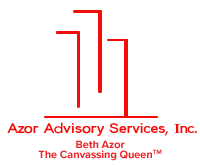The first step when tasked with leasing a shopping center is conducting an in-depth market study.
Physically drive to the surrounding shopping centers and take notes on who leases the center, and figure out the vacancy, age, ingress/egress, tenants going out of business, tenants coming to the center, anchors, tenant mix, parking, visibility, functional obsolescence, external obsolescence, and any additional notes that may affect the value of the center.
Contact the leasing agent or leasing company to get the rental rates, pass-through rates, total square feet, and available square feet of the center.
Don’t rely on LoopNet or CoStar. Although the information on those platforms can be helpful, it is NEVER 100% accurate. The best way to get this kind of information is by developing great relationships with your neighborhood leasing agents.
Invite these leasing agents out to coffee or breakfast once a quarter and share information with them. Believe it or not, retail real estate is not a zero-sum game. Cooperation is better for both parties.
Order the information in an Excel file. List the properties in the rows beginning with your subject properties at the top, then follow with the biggest competition in ascending order. In your notes section, compare the centers to your subject. For example, XXX center has strong parking, but weaker than subject.
Tidy up your market study with styling and send the information to all the neighborhood leasing agents who cooperated with you.
When you discuss rent with prospects, some of them will bring up the rent at other centers to negotiate with you. If you know your competitors in the market, you are equipped with the necessary tools to effectively negotiate from a position of power.
Retail Leasing 101: KNOW YOUR MARKET.
